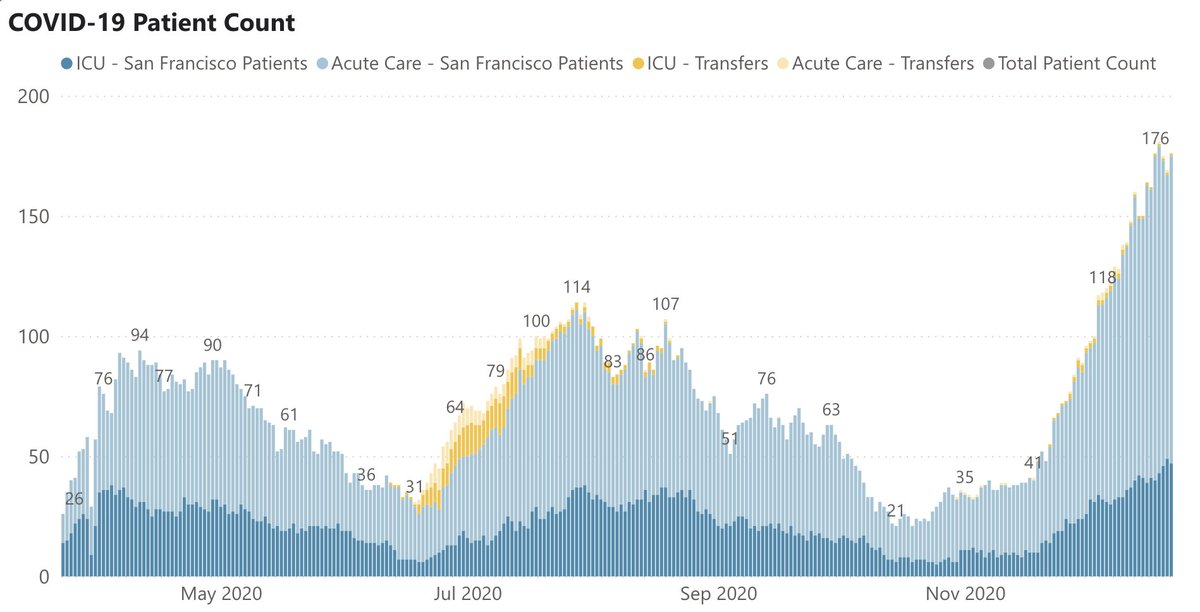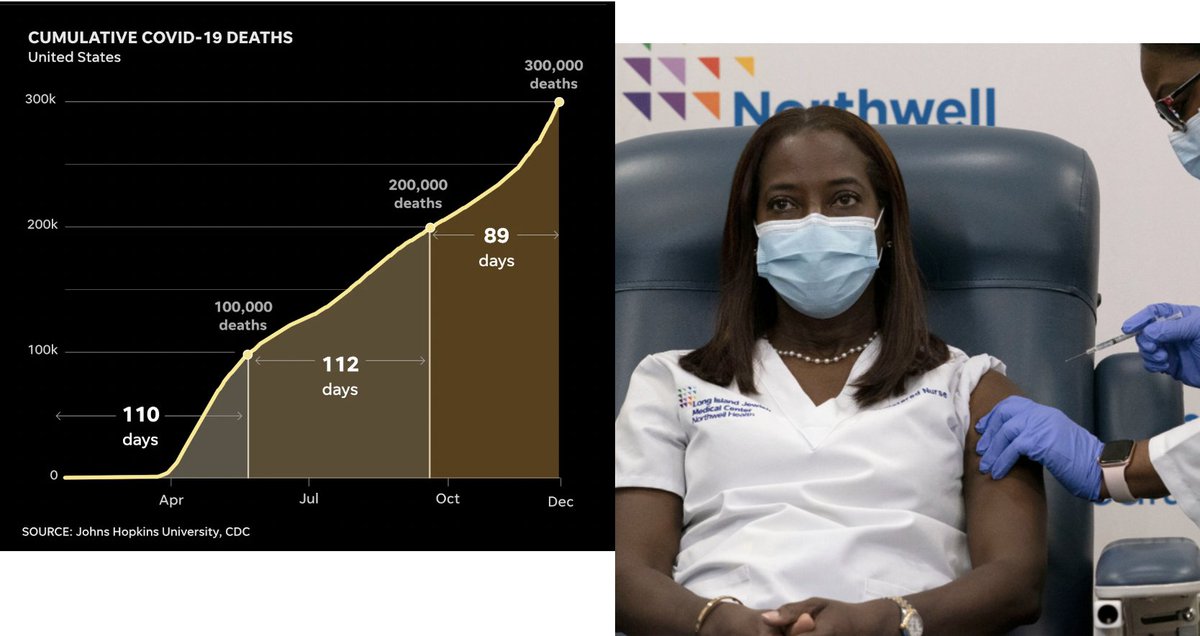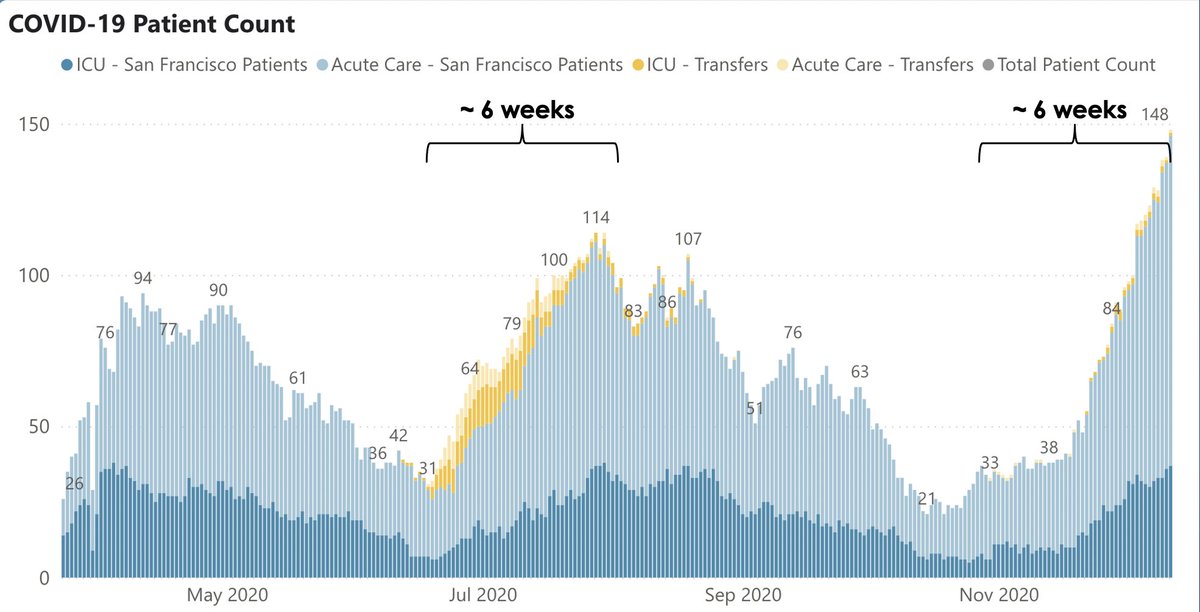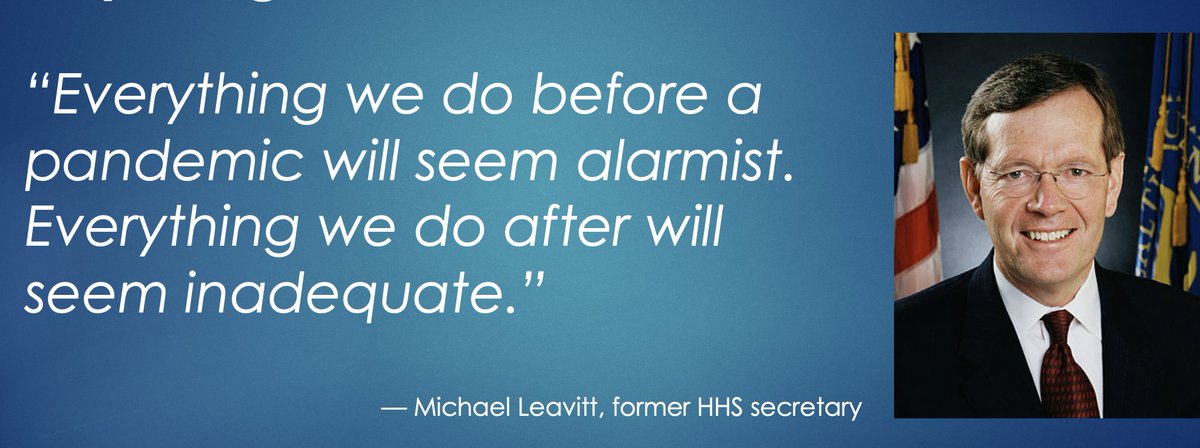
U.S. is now considering idea of a single vaccination shot, delaying shot #2 until months later. Last wk, I thought that was a bad idea – the trials that found 95% efficacy were 2 shots; why add extra complexity & a new curveball. But facts on the ground demand a rethink. (1/7)
The two main changes are the slower-than-expected vaccine rollout and the new variant virus being found in the U.S. Both demand that we turbocharge the process of getting a large chunk of the population at least partly protected. (2/7)
Here's my back-of-the-envelope math:
- Single shot seems to be about 80% protective after a month
- 2nd shot adds some efficacy (up to 95% protective), and maybe (tho not yet proven) some durability.
- New variant is here, and undoubtedly far more widespread than we know. (3/7)
- Single shot seems to be about 80% protective after a month
- 2nd shot adds some efficacy (up to 95% protective), and maybe (tho not yet proven) some durability.
- New variant is here, and undoubtedly far more widespread than we know. (3/7)
- Variant is ~55% more infectious than old one. Even though it's not more deadly, this means that if we engage in same behaviors, many more will get Covid & thus far more will die. UK shows that once here, it spreads fast.
- We seem incapable of changing behavior very much. (4/7)
- We seem incapable of changing behavior very much. (4/7)
- As has been widely reported, the roll-out is going far slower than we hoped.
- According to most vaccine experts, delaying shot #2 by a few months is unlikely to materially diminish the ultimate effectiveness of two shots (critical point; we should be testing to be sure). (5/7)
- According to most vaccine experts, delaying shot #2 by a few months is unlikely to materially diminish the ultimate effectiveness of two shots (critical point; we should be testing to be sure). (5/7)
Taken together, if we have vaccine doses to distribute in Jan-Apr, it seems increasingly evident that a strategy of getting as many people (particularly high-risk) their first shot ASAP will save far more lives than sticking with the two shot plan. (6/7)
Far better to have 100M people who are 80% protected than 50M people who are 95% protected, particularly as we are facing a foe that is getting smarter and nastier. Or at least it seems that way to me. You? (7/7)
• • •
Missing some Tweet in this thread? You can try to
force a refresh












